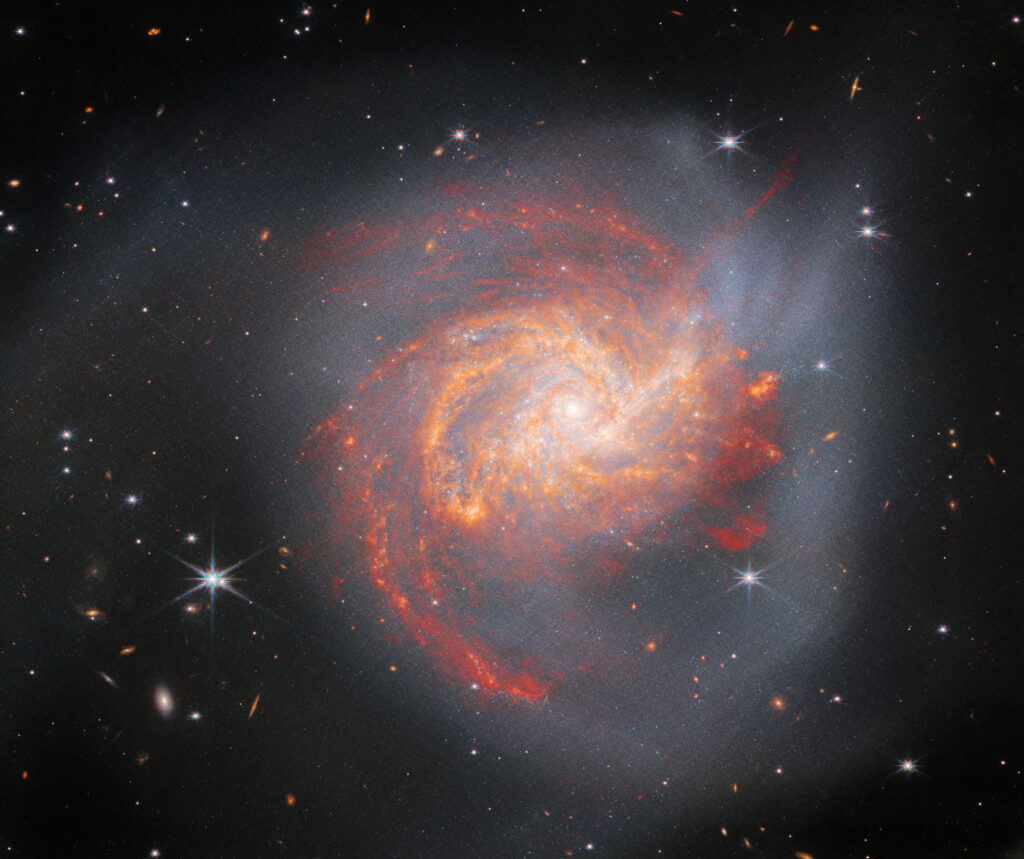The presented image was taken by the James Webb Telescope (JWST). It captures the spiral galaxy NGC 3256. At first glance, the cosmic spiral makes a serene impression. But there is a dark secret hidden in its past.

NGC 3256 is located at a distance of 120 million light-years from the Milky Way. It is part of the Hydra-Centaurus Supercluster. Despite the apparent calm, NGC 3256 was born as a result of a cosmic cataclysm: the collision of two spiral galaxies of equal mass. According to astronomers, it happened about 500 million years ago.
If you were asked to describe the collision of galaxies, then most likely you would imagine stars crashing into each other. However, in reality, this is an extremely unlikely scenario. The distances between the stars are so great that they calmly pass through each other. At the same time, clusters of gas and dust filling galaxies readily interact with each other. Gravitational perturbations lead to their densification, which leads to an explosion of star formation.
The turbulent past of NGC 3256 is indicated by shining filaments consisting of stars and dust that stretch from its disk. Another evidence is the red and orange areas scattered throughout NGC 3256. They contain young stars formed as a result of the merger. They heat the dust clouds surrounding them. Those emit infrared radiation, which can register JWST. The image also includes tidal tails consisting of stars ejected during the merger.
The image of NGC 3256 was taken as part of a study aimed at studying the nearest star-forming galaxies. Astronomers are interested in the physics of the birth of new stars, as well as the growth of supermassive black holes, which inevitably accompanies the collision of galaxies. NGC 3256 has photographed Hubble in the past. Now, its observations have been supplemented with infrared images of JWST.
Recall that JWST recently took an amazing picture of Saturn.
According to https://esawebb.org
Follow us on Twitter to get the most interesting space news in time
https://twitter.com/ust_magazine

